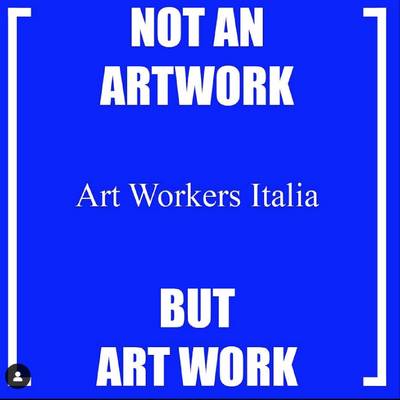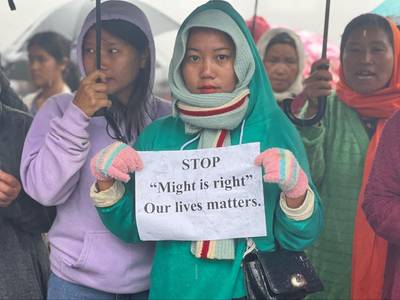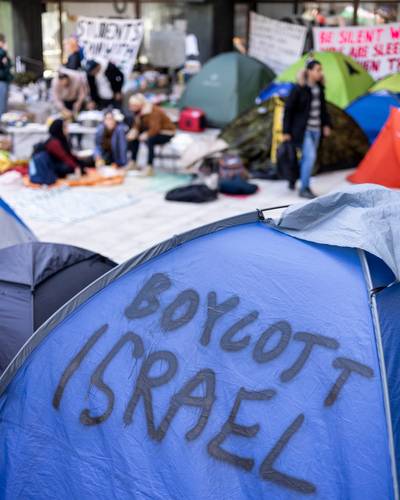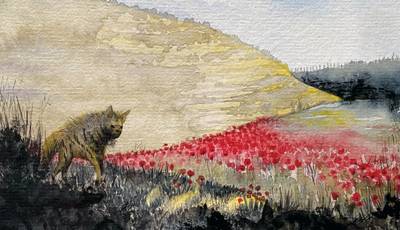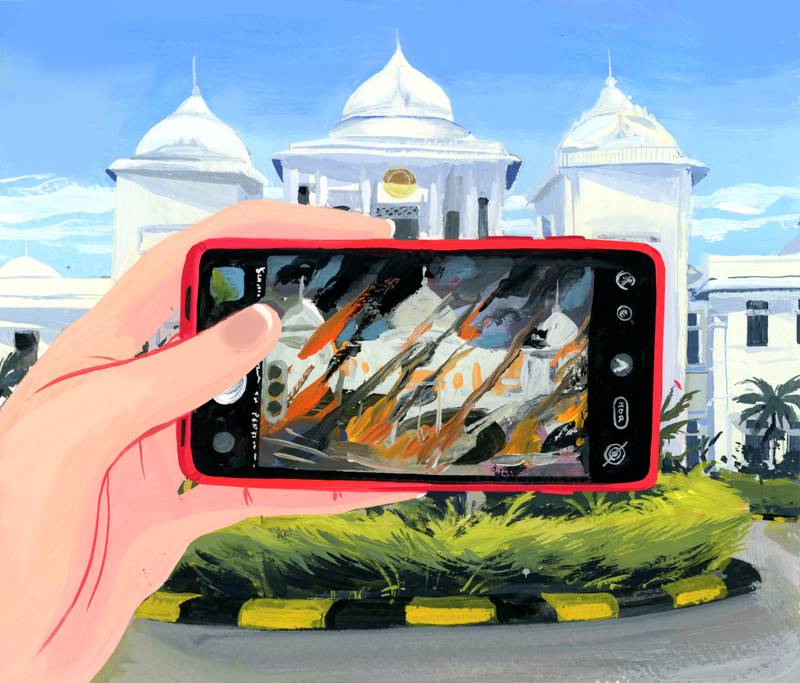

Illustration: Tara Anand
சிந்துஜன் வரதராஜா (Sinthujan Varatharajah) is an independent researcher and essayist based in Berlin. The focus of their work is statelessness, mobility and geographies of power with a special focus on infrastructure, logistics and architecture. Their first book “an alle orte, die hinter uns liegen” (“to all the places we have left behind”) was published in September 2022 in Germany by Hanser Verlag.
With the end of the war-genocide, a new type of tourism started emerging in Jaffna: war tourism. In this essay, சிந்துஜன் வரதராஜா looks at life inside of a new hotel in the former war zone and explores by way of it the intrinsic relationship of military-occupation with tourism in Eelam.
Friday morning.
Tour guides picked up white tourists from a brightly lit hotel lobby.
Local ground staff, dressed in blue and gold cotton saris, hair held tight in a bun, carrying a single white plastic lily tuck to their side, moved quickly upon the shiny marble floor. Safety pins attached to the young staff’s uniforms prevented unwanted and distracting fabric movements from showing. The air conditioning of the hotel ran on high voltage. No signs of exhaustion were to be seen on the workers’ faces.
Male tour guides sat on the edge of the lobby’s three-seater. Some of them spoke heavily-accented French, others broken Italian, and some only English. The men chit-chatted to their well-fed guests who just minutes before had indulged in a breakfast combo of Tamil, Sinhalese, and western cuisines cooked by a Sinhalese cook who doesn’t speak Tamil and served by Tamil waitresses and waiters who, on the other hand, had to learn casual Sinhalese to communicate with the hotel’s cook. The white tourists didn’t seem to be able to distinguish between either food, people, or language. As their delicate western stomachs were still busy digesting the random combination of foreign meals, most couldn’t care less to understand the differences between all these, to outsiders, same-looking dark-skinned people.
Unlike hotels in the South or elsewhere in the country, the only five-star hotel in the Northern Province couldn’t boast of a swimming pool. The hotel stood out in a country known for its beach resort tourism, the prime type of low-cost tourism that attracts masses of foreigners, primarily pale-skinned Europeans, who lounge for hours around expensive swimming pools near pristine beaches doing little more but swim, tan, and sip cooled drinks. The absence of a swimming pool in this prestigious hotel up North, part of a large Sinhala-owned chain from the deep South and opened only three years before, left the foreign tourists with little activity to do following breakfast. It was a question between nap time and exploration time. The unbearable heatwave that was to be expected every noon, however, left no time to waste. The alternative to leaving the hotel was to be trapped in a hotel with a weak internet connection, and no swimming pool or gym for the rest of the day.
Commotion started to fill the hotel lobby.
Their tummies filled, the white tourists slowly walked to the lift to meet their tour guides, who already awaited them in the ground-floor lobby. “First we’ll visit the Jaffna Fort, then Nagadeepa (Sinhala name for the Tamil islet Nainathivu) and finally we’ll finish off with the Jaffna Library. That should be enough for the day”, the tour guide quickly explained in accented French. The white tourists, still suffering from food comas, quietly nodded.
An air-conditioned van with a Western Province (WP) number plate awaited them in the hotel car park right outside the lobby. Its engine had been running for some while. The driver, a middle-aged Sinhalese man, who had driven the tourists on the infamous A9 up North, a so-called highway rebuilt following the war, connecting the Southern parts of the island with its Northern counterparts, had stayed overnight in a lodge designated for drivers that showed no signs of the luxurious hotel chain it belonged to. Hidden from the eyes of the tourists and their eager tour guide, he yawned behind his steering wheel.
The tour guide, a short-haired, strong-built Sinhala man dressed in a green polo shirt and beige shorts, promised the tourists an eventful day. The confidence in his voice didn’t translate. Signs of anxiety were still written all over his guests’ faces. Seemingly worried about the sun that promised to patiently grill their sensitive European skin, they were faced with the dilemma of being visitors to Jaffna. The Tamil peninsula was, after all, always described as the arid region of the island in tourist brochures. It was known for its so-called inhospitable climate, dry vegetation, and violent history. And yet, they still chose to come here. The white tourists’ relatively expensive three-day stay had to be made worthwhile.
Since Jaffna didn’t fill the prime slot in the tourists’ busy vacation itinerary, there was no time to rest. Pleasure, enjoyment, and laziness were reserved for the Southern, Central, Western, and, if they were adventurous, Eastern provinces of the island. Jaffna was neither a destination of pleasure nor enjoyment. Rest wasn’t to be sought after or found here. Despite being located on the same island, often euphemistically referred to as paradise island in tourism literature, Jaffna is not a traditional tropical tourist destination. And it is, beyond its scenic landscapes, far from being a paradise.
Another shiny white Japanese bus, air-conditioned, with tinted windows and a yellow Western Province number plate arrived in the car park.
A fresh group of elderly white tourists is loaded off, dressed in typical western tourist clad when visiting former colonies. Almost immediately a middle-aged Sinhalese man dressed in Western clothes rushed ahead of the group and entered the lobby. Upon arrival, he instructed the Tamil ground staff, with heavy gestures and Sinhala-accented English, to quickly do their “Jaffna thing“. A young Tamil man, no older than nineteen-years-old, dressed in a black cotton sarong, a black Nehru shirt and flaunting an unflattering golden turban on his head, usually seen hovering over the heads of grooms and best men at Saiva wedding ceremonies, followed suit. The young worker held the glass door, double his size and framed with heavy locally-sourced teak wood, wide open for the guests to smoothly step in and meet their welcome committee. A young Tamil woman entered the lobby floor, carrying a golden tray with little bowls of vibuthi and kunkumum. Behind her, another Tamil woman followed suit with a tray of fresh passion fruit and papaya juice served in sparkling wine glasses. A third Tamil woman arrived to complete the procession, holding in one hand a basket with warm refreshment towels and in another, a silver tong. The women blessed the white guests, served them drinks, and later picked up their used wipes. A ritual had been completed. “Welcome to Jaffna“, they said.
Minutes later, the Sinhalese hotel manager rushed to the reception desk.
She quickly folded her hands to resort to a Sinhala-accented “vanaggam” (vanakkam). Dressed in expensive-looking western clothes, she could have easily been mistaken for a hotel guest. The hotel manager switched to English to talk to new guests, then abruptly to Sinhalese to micromanage a senior Tamil staff member, and then back to English again. She floated through the hotel lobby with her head held high and an ease only a person in a managerial position could have, leaving scents of Colombo 7 cosmopolitanism behind her. A few moments later, the new arrivals had already disappeared into their rooms. The Sinhalese hotel manager delegated new tasks to her employees before disappearing into some meeting room – or maybe just her private accommodation inside the hotel. Two young Tamils, crowned with oversized golden turbans hanging from their small heads, quickly followed the footsteps of the new visitors. Both obediently carried the white tourists’ heavy luggage behind them towards the lift to reach the guests’ bedrooms on the hotel’s upper floors. The Sinhalese drivers, meanwhile, quietly disappeared into their sleeping lodge.
Vans and SUVs with WP number plates sat in the clean car park. The hotels’ open garage was overlooked by two elderly Tamil security guards dressed in light brown oversized uniforms who were now standing idly, not knowing what to do next. The early morning buzz that had preoccupied the Tamil workers just minutes before slowly faded into the quiet.
The French tourists had left for the Jaffna Fort, built by the Portuguese centuries before, where they were most certainly told stories about terrorists, victories, and Sinhala resilience. There they were most likely not greeted by Tamil scripts, but by the Sinhalese and Latin alphabet. All the while, the new guests who had just arrived were probably preoccupied with taking a shower to wash off the dust from their long journeys in ac-ed vehicles arriving from the South, before maybe resorting to a nap ahead of their journey further inland or outland.
Since the reopening of the A9 highway, the reintroduction of regular train services to the Tamil provinces, the improvement of some local roads and bridges, and the normalisation of military occupation by the Sri Lankan state that preceded all of these infrastructural developments in the region, tourism has been thriving across Eelam. Investments come from all directions. Investments come from Sinhalese as well as from Tamils, Indians and Chinese.
Since the end of the war-genocide, Sri Lanka has been praised as the number one tourist destination by several prominent international newspapers and magazines. Despite the fact that its national carrier, Sri Lankan Airlines, was collapsing by the minute; despite the fact that Sri Lanka is one of the most heavily indebted countries in the region, with parts of it already owned by China, the country saw a steady increase in visitors year after year.
Profit speaks its own language.
Less than a kilometer away, next to the regional office of the Ministry of Defence and Urban Planning, eight young Tamil women greeted me in a v-shaped choreography, folding their hands to utter shy vanakkams. Dressed in green and black cotton saris, similar to those of the Tamil women in the other hotel, they stood in the midst of a big construction site managed by none other than the Sinhalese woman with the cosmopolitan flair who called the only other five-star hotel in Jaffna her national career opportunity. Hesitant and anxious at the same time, the young women cautiously walked on their new high heels, which seemed terribly mismatched for the choreography they were told to perform, creating a wonky, somewhat symmetrical welcome formation on the slightly dusty marble floor.
Before arriving in Jaffna, the eight young women had just completed their hospitality training in a training facility that was partly funded by the German Corporation for International Cooperation. Following the completion of their course, they had moved from rural areas across Eelam to Jaffna Town for their first-ever job opportunity. And their first stay in what used to be the island’s second most-populated city. These women were part of a new generation of graduates exiting several new training facilities that have cropped up with the end of war-genocide all across Eelam. The institutes are funded by Western governments and are part of a parallel strategy to accelerate the economic development of the region and stifle both outward migration as well as inward political resistance.
From the looks of it, the young Tamil graduates seemed like they had just stepped out of one of the many large-scale billboards plastering roads and junctions in the region, from Vavuniya all the way to Jaffna. The posters encouraged young Tamils to take an interest in vacancies in the service industry—to invest in staying in this war-torn region. The German-funded advertisement campaign often shared public spaces with a series of different posters: gloomy advertisement posters paid for and designed by the Australian government. Unlike the German posters, these ads weren’t luring locals in with smiling faces, but discouraging Tamil asylum seekers from heading towards the sea in the direction of a promise of a life worth living.
Welcome to the paradise island.
Since the end of the war-genocide, Sri Lanka has been praised as the number one tourist destination by several prominent international newspapers and magazines. Despite the fact that its national carrier, Sri Lankan Airlines, was collapsing by the minute; despite the fact that Sri Lanka is one of the most heavily indebted countries in the region, with parts of it already owned by China, the country saw a steady increase in visitors year after year.
At the time of writing, Sri Lanka was a top tourist destination for Western Europeans, Russians, Ukrainian, Chinese, Japanese, South Koreans and Indian tourists. 2.3 million foreign tourists arrived that same year (2018) through the country’s only viable international airport in the far South. After decades of a lingering war-genocide, far from tourist hotspots in the South in regions long closed off to tourists, the island had become a “new” global beach tourism destination. By then the state had secured its colonial borders, thus successfully monopolised control over the island territory, enabling waves of future tourists to arrive.
Soft power was quickly accompanied by hard facts. The noise of bombs and artillery fire was followed by the noise of building sites; destruction was followed by construction. From improvements made to roads, bridges, airports and port facilities, the introduction of new garbage disposal systems, the seizing of land to construct new hotels and beach resorts, the cleansing of beaches or the conservation of wild life, the government heavily invested in improving infrastructures in order to render the island more palatable to foreign travelers.
Tourism unites the country.
For years Sri Lanka has aggressively been putting out propaganda to whitewash the island’s global image – to push the many Tamil mass-graves, mourners and protestors out into the unknown ocean, away from the sight of foreign tourists and journalists. Starting off with high-end tourism advertising campaigns plastered on public transport in major Western cities, to state-funded tours organised for well-known foreign tourism journalists, to paying foreign PR firms to place favourable reporting in foreign newspapers, to pushing touristic social media content, creating trendy hashtags, or investing in the proliferation of cultural production within the country: from literary festivals, art festivals to foreign movie productions.
Soft power was quickly accompanied by hard facts. The noise of bombs and artillery fire was followed by the noise of building sites; destruction was followed by construction. From improvements made to roads, bridges, airports and port facilities, the introduction of new garbage disposal systems, the seizing of land to construct new hotels and beach resorts, the cleansing of beaches or the conservation of wild life, the government heavily invested in improving infrastructures in order to render the island more palatable to foreign travelers. This was particularly true for the newly conquered Tamil territories of Eelam, where soldiers were quickly to be involved in the construction, maintenance and control of the Sinhalese tourism-industry-complex.
The so-called “new” land that for long had remained out of reach for the government, and therefore tourist unfriendly territory, had, following the victory declaration of the state, become readily available to be developed to gear towards this ever so land-hungry tourism-industry-complex. In conjunction with a heavy surplus of Sinhalese soldiers that were left jobless post-mass murder, who spent more time running plantations, practicing gardening, playing cricket or football on occupied Tamil land, human resources were readily available to build and maintain the necessary infrastructure for these new tourism opportunities on this new land. The state wasted no minute in turning them - land and soldiers - into cash. The roads that were previously closed off to tourists now stood wide open, far more open than ever before, far more open than to Eelam’s own people. The infrastructure that previously carried foreign weaponry now carries foreign tourists arriving from the South. Tourism was the chosen future for this tropical island. Tourism doesn’t wait for the land to heal. Tourists don’t wait for accountability, justice, compensation or a political resolution.
All of these state actions combined led to an increase in foreign tourism demand. This hike on the ground quickly also reflected in the skies. A growing network of regional and international airlines started launching new routes or to increase existing flight connections to Colombo following the war-genocide. With air traffic increasing, flight options and thus also competition multiplied. It allowed for easier and cheaper entries for tourists into the island and increased the net profits for airlines such as Turkish Airlines or Qatar Airways. Just as tourists, airlines don’t wait for the dust to settle.
By the time the Indian Ocean state had begun reinventing and reinvesting in its own traditional tourist industries, it had opened new markets for new customers who were turning younger by the day — and who were arriving with a growing appetite for alternative experiences. Curious enough to be attracted by off-track adventures, they sharply distinguished them from their older counterparts. The latter were more attuned to the all-inclusive vacation program traditionally offered by beach resorts in the South. Unlike their newer counterparts, they were seeking relaxation from their day-to-day lives and therefore rather went by the traditional concept of vacation created as a byproduct of industrial capitalism. They didn’t travel into the faraway tropics to exhaust their unacclimatized bodies and eventually require another vacation from their original vacation. Some of the new travelers, younger in age and differently exposed to the analog and digital world, arrived with a somewhat different appetite and understanding of what vacation to them means.
Surprised by the sudden visitors, the woman at the reception desk helplessly awaited instructions from an absent supervisor on what to do next. Clear signs of confusion, irritation as well embarrassment about the state of their unfinished hotel could be seen on their faces. Wall pictures were still stored on the floor, the open-concept restaurant was still being wiped clean; the lift still not in operation and the 300 odd rooms of the new hotel were still unoccupied whilst the mattresses for future guests remained wrapped in foil barred outside of the rooms. Yet the hotel was already receiving guests. Greed knows no language barriers.
Modern tourism was born in 19th century England, where new means of extracting and exploiting the colonies produced new forms of labour in Industrial England. The human repurposing of nature enabled the birthing of new technologies as well as the development of new means of transport. These were to quite literally change the surface of this earth. Thomas Cook pioneered modern tourism when introducing the British elites to using the many new means of transport to tour and explore the world. He allowed for the benefactors of colonial extractions as well industrial capitalism to use their surplus of wealth and time in order to flaneur different landscapes, from metropolises all the way to its many overseas colonies. From its inception tourism developed into a nation-making project and was both inwardly and outwardly directed. It stabilised human ideas around possessing and ruling the land with all its inhabitants. What started off with traders, soldiers and settlers always ended with tourists. Up until the present, tourism forms the third wave of colonialism.
Tourism enabled travelers to arrive in unknown lands in the disguise of mundane civil activity, ranging from leisure, pleasure, relaxation, and enjoyment to adventure. Strangers became agents of mobility, encounters, interactions, and development and captured these collisions through photos, postcards, letters and later videos. It helped create familiarity where there are few by taming landscapes, people and cultural differences, by rendering close what’s distant, intimate what’s foreign, and mine what’s yours.
Tourism is commodification and consumption. Tourism is conquest: a weapon used to subjugate and control difference with smiles, passion fruit juice and tightly wrapped saris.
The first five-star hotel in Jaffna was opened in a grand ceremony by the ruling Sinhalese President and dozens of his government ministers in 2015. Three years later, the second five-star hotel in the region had a less ceremonial inauguration. It had started functioning overnight, confusing its own staff, previously trained in internationally-funded first-class training facilities. A new normalcy had struck the region. No President from the South will be coming up North to inaugurate hotels anymore.
Upon launch, the hotel’s condition was nothing short of appalling. It will, however, not detract from the lucrative business strategies of which it was part of and that precisely allow for such poor management. The net profits that were to be made in the industry in this region were high. The growing demand for well-serviced hotel rooms in Jaffna, an increasingly popular destination for a new type of state-sanctioned and subsidised tourism – war tourism – allowed for this very hotel to receive guests from other overbooked hotels in the region without having to make much of an effort or any form of promotion to attract guests. Its unfinished state surprised its employees more than its guests.
Tourism enabled travelers to arrive in unknown lands in the disguise of mundane civil activity, ranging from leisure, pleasure, relaxation, and enjoyment to adventure. Strangers became agents of mobility, encounters, interactions, and development and captured these collisions through photos, postcards, letters and later videos. It helped create familiarity where there are few by taming landscapes, people and cultural differences, by rendering close what’s distant, intimate what’s foreign, and mine what’s yours.
The only five-star hotel on the peninsula, Tamil-owned but Sinhalese managed, sits at the railway station, next to another hotel that speaks to a less affluent audience and receives guests others cannot and will not accommodate. Next door sits the small regional office of the Colombo-based Ministry of Defence and Urban Planning. The government office overlooked this Tamil-owned construction site and showcased the harmonious relationship between infrastructural development and military occupation in the Tamil homeland: how no development project can be realised without the direct approval of the occupying state and its vast military apparatus in Eelam.
This five-star hotel near Jaffna’s historic railway station was only the latest of a number of hotels, hostels, and lodges being built in the region to accommodate the rising influx of tourists and Tamil returnees. Hotels are, however, only one facet of this multi-million RPS industry that serves those who live the furthest away from the region; those who are the least affected by the violence that shapes land and people; and those who are the least interested in the upliftment of the Tamil people. Since 2009 “development” has become the only type of medicine applied to the many wounds and demands made by the Tamil people. Development is considered by the Sinhalese state as the political resolution to Tamils’ demands for justice, accountability and self-determination. Development is their spring; the Northern Spring that just won’t come to an end in a climate that knows no spring.
Between bicycles, small second-hand Japanese cars, vans, and autos, shiny new SUVs push through the narrow streets of Jaffna; streets which weren’t conceived for such massive and expensive foreign vehicles. Most of these SUVs carry southern number plates and southern passengers who look through dark shades and tinted windows onto the buzzing, dusty streets of this fast-changing city – in the, for them, faraway North. Their faces remain invisible to Tamil pedestrians, cyclists and motorists.
Since the end of the war, Jaffna has become a buzzword, a mysterious, tragic but also reachable destination that you visit when you seek digestible difference; that you speak about to as many people as possible post-visit, to not actually speak about the place or its people, but your choice of destination, your act of going, your act of supposed partaking, experiencing, and being…different. Jaffna has become a “thing” for others, independent of its people and its histories. With each non-Tamil visitor, parts of Jaffna are carried away, either in SUVs or other vehicles with WP number plates, weaving stories different to the stories locally told, extending its breath, or what remains of it, to faraway places and territories. It is this scent of petrol used to forcefully connect what remains divided that fills the Saskia Fernando Galleries, Barefoot Cafes, Paradise Road Stores, Colombo Biennales and Universities of the faraway capital. It is the dust of this land that is captured on photos and stuck to tires and shoes that are extracted from the land by each visitor using infrastructures built to submit but not to uplift.
The restaurant floor was still being wiped by a young Tamil boy.
The Sinhalese chefs tested out recipes that filled the dining room with the scents of different local spices. A Tamil painter stood on a ladder to complete a large black and white mural painting that reads Jaffna in a cheerful-looking capital typeface, surrounded by sights that were never really sights, to begin with. One of them is the Jaffna Fort, a symbol of conquest used by different colonial powers, including the Sri Lankan state, to subjugate the local population. It is the same fort where the Sinhala guide took the French tourists on a Friday morning for their very first touristic visit to this besieged peninsula.
The middle-aged male tour guide who, hours before sat only a few meters away from me, was more than just a bilingual employee of the country’s vast tourism industry who was booked by the tourists through a tour package in an office in Colombo or their faraway country of origin. He was more than what he presented as to the Europeans who employed him to connect him to a land that he was as foreign to as were they. His dress code, haircut, and body frame revealed him. Not to the white tourists, but to everyone else here, in this region shaped by colonisation and military occupation. He was someone with a long military history.
With the rise of war tourism, dozens of ex-soldiers and Sinhalese deportees from Europe have become new tour guides in Jaffna. Like the broad-shouldered man, they have found new employment opportunities in this heavily-occupied stretch of land. Their mission has extended from annihilating humans with military arms to explaining away the victims of their own crimes with the new – but truthfully old – weapon of tourism. Here, soldiers have become storytellers who no longer require arms to capture land and people, who no longer require uniforms to mark their presence. Like so, they have embraced the opportunity to establish “truths” that travel the same roads, railway tracks and aerial highways its recipients do. This time, however, not inwards-bound, but outwards-bound, sparkling new interest in new places; encouraging new travelers to visit this land of a never-ending spring.
“Welcome to Jaffna”, they said.
